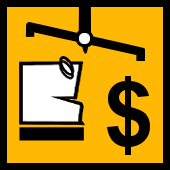Live broadcasts from retail consultations
We publish a report obtained directly from a skype-consultation, about the errors in thinking during the setting up of indicators of efficiency of salespeople from retail shops.
There is a case described in a book: in order for a plane with "humanitarian help" to land on one of the islands in the Pacific Ocean, the tribe was ordered to cut down the thicket into a "runaway", which they successfully did. But since their efforts were accompanied by the dances of the shaman, the tribe made the linear conclusion that in order for a "humanitarian" plane to land, they should start… beating the drum and cut down a clearing. The acquired experience was transferred from a generation to the next.
The errors in thoughts described below are similar to that case. But, unfortunately, are not so obvious.
To these questions during a skype-consultation, is answering a key expert and developer of the "ANY-TRADE" project, Tkalich Ksenia.
Question: It is necessary for us to have a report on the number of sales and not only on turnover when evaluating efficiency. However, the units of measurement of the goods are various: some goods are sold in running meters, others in squared-meters, others still are weighed in grams/kilograms, others are calculated in units etc.
That is why, it is not a trivial task to define in which units to calculate the number of sales. We are to have a report of the sales in receipts, but You said that we should not do as such. Please explain, why?
Answer: Your shop is not big and the salesperson can also work as the cashier. That is why, such a report is dangerous since it provokes a temptation to split receipts. It is better to use the parameter of "number of lines in the receipt" to count the number of sales. One line is one sale.
Additionally, to avoid introducing temptation to break the purchase into multiple lines (for example, a one-time purchase of 100 batteries into 10 purchases of 10 batteries each), to count small goods enter "a minimal measurement unit" (eg, "package").
Also, do spot checks of the database (it is implemented in software) to find rows that have the same bar code for the item, the same buyer code and the same time of purchase.
EXAMPLE
Receipt 1.
Article 1111 batteries bought by Client code 12345 on the 18th of August 2011 at 13:05 — 5 units.
Receipt 2.
Article 1111 batteries bought by Client code 12345 on the 18th of August 2011 at 13:07 — 5 units.
From the example, it is obvious that the purchase was split.
It is not excluded that there will be real cases when the Client suddenly decided to buy "more", but the whole question is in the amount of such cases.
And when servicing a Client with a discount card, the purchase (Client code) will be automatically identified with the purchased good.
Question: Are inverse situations possible?
Answer: Yes, and not so long ago in a chain of small boutiques, where the vendors and cashiers in each shop were the same person, and as an indicator of efficiency the "average receipt" was used among others and it was discovered that the vendors of various shops of the chain not only passed the receipts for all the customers but also joined the goods of various customers into one receipt.
You should always be very careful about relative indicators, in general. When You introduce relative indicators instead of absolute ones in a remuneration system, You create harmful temptation. For example, if instead of absolute indicators "factual turnover" and "factual number of sales" you introduce "an average receipt" (a relative indicator), there is a risk that You will get what has been described here-above.
ANOTHER EXAMPLE
In a wholesale company, it was decided introduce the indicator of "average deal at the department" instead of motivating specific deals attaching the work of specific managers, with an aim of "simplifying the report" and "forming team spirit" after listening to some illiterate freelancers. Consequently, it started to be calculated in a simple way: the general turnover (information from accounting) is divided by the number of Clients on the database. This was the "simplifying" and the strange assumption that the "overall result" will inspire everyone.
The result was, of course, completely different. The database was "cleaned" of Clients the first month itself.
In another company (a very large one), where someone read business literature from an underground crossing and used a "motivational indicator" - "the relation between turnover and the number of employees", employees learnt to "properly distort" the data on the table.
Question: Are you, principally, against relative indicators?
Answer: It is not a matter of principle. You should just see which task is being solved and whether the data is correctly (relative to this task) obtained.
For example, almost everyone likes the relative indicator "conversion" (the relation between the number of Buyers and the number of Visitors). But if 1000 Visitors entered the shop today and 200 of them made a purchase (a conversion of 20%) but the next day 100 Visitors entered and 50 bought (a conversion of 50%), this does not mean an improvement in work of 30%, as You understand.
By the way, we are tired of "redirecting" the link between the salary of vendors and this indicator.
Or this is yet another TYPICAL EXAMPLE with relative indicators, which on "exit" gives an incorrect result.
Some wholesale companies which allow the sales of products with delayed payment, sometimes use, including for the stimulation of sales managers, the indicator "The sum of paid-for deals/The Sum of shipped deals".
But it is not difficult to note that the following are not considered in doing so:
- Profit loss from payment overdue. If there was no payment overdue, the money would be in the turnover and the gross profit would have been higher.
- Expenses on percentages paid for further bank credits. Were we to paid on time, we could have borrowed less money.
- Inflation.
- And then. If You have 700 paid-for deals and 1000 shipped (0,7), it is much better than 5 paid-for deals and 6 shipped (0,83). Right?
Question: Yes, but You can object that such indicators are not on their own but are used as a complex with others.
Answer: Yet, why not have indicators which give the correct results on "exit" in a complex with others?
Question: I have a question about setting up a plan for sales per shift. We set it up for a group of salespeople working in a shift, in the following way. We took the results "a little bit worse than that of the best salesperson" and multiplied it by the number of people in the shift. Is it correct?
Answer: Of course not.
You have a flow of customers which does not depend on the number of employees in the shop: Client visit or do not visit the shop, irrespective of the fact, whether the salesperson is working, whether he is sick or on holidays, whether he is the best or the worse.
In the current regime, Your salespeople are often idle, or the maximum number of staff is required only during "peak time", and for the rest of the time, even with a minimum staff per shift they will stay idle. Correct?
Furthermore, in order to avoid losing Clients, on specific days of the week, perhaps You prefer having an excess (spare) number of salespeople per shift.
It occurred that when the vendors were less, they get into a condition of "normal" workload, except during "peak-time". In other words, the salespeople have two conditions – "waiting" and "sales".
When the number of customers is reduced, the condition of waiting is extended.
As compared to a normally loaded worker at a factory: he would physically not be able to replace a colleague since he is loaded for the whole day, and he has only two hands.
Question: What should be done?
Answer:The sales plan should be set up, based on the flow of customers. And from the latter itself (the flow of customers) define the required number of salespeople. If You do the contrary, You might face such a situation where the vendors will come to a mutual agreement and take turns working by a fewer number, and still "overdo" the plan.
As a result of working only part of the working time, they get the same salary as they would have got working the whole time and the shop gets angry Clients (due to the inability to find salespeople since there are fewer of them) and a real uncompleted sales plan.
Question: If on the contrary, we know the general plan of sales per shift and we want to set a personal plan for each salesperson, can we divide the general plan by the factual number of people per shift.
Answer: No, You cannot.
You should understand that even for a tight workload and a well-organized work, a decrease in the number of salespeople per shift (even due to holidays, sickness etc.) will not lead to a reduction in results proportional to the reduction of staff members. The factual work results of the whole shift can remain as a plan or be slightly reduced.
Which means that the personal results of each employee rises but not linearly. That is why the remuneration system for increased intensity should be different. I.e. the general plan cannot be divided by the number of people.
Question: Well, let the worker get undeserved prize. It does not bother us…
Answer: I am sure that this does not bother You. But after some time, You will lose the exact understanding of workload for people and the necessity for their number. And I am not tired of reciting: Do not get tempted. If You give in to this, You will create a stimulus to "get sick" in an advanced collusion.
Question: There are some situations when people working in a certain brigade, work different hours during a shift. For example, a salesman works 8 hours daily and another - 10 hours. Or one works 3 hours per shift and then he is replaced by someone else. How should the calculation be made in such a situation? Exactly per hour?
Answer: If we were to work in hours, then correspondingly, we will have to add 150 m working hours. But never-mind, let’s suppose it is not difficult for You.
But then the employee will ask You, what should he do if he did not work a full hour, but 1 hour 20 minutes etc.? Furthermore, if You overcome the difficulties of an hourly calculation and still follow these "presence-absence" cycles and change the plan proportionally to the factual worked hours, the question about the "second derivative".
They point towards:
- One employee worked only during peak hours,
- Another – during hours of the standard workload,
- Yet another– during "falls" (The situation described to You when "one person worked 3 hours and then he was replaced by another").
How to calculate that and who will agree to work only during morning hours?
I.e. the calculation can, of course, be lead towards extreme exactitude, but there is a limit to everything. According to me, "shift" as a unit of measurement to calculate the work of a salesperson in a shop is amply enough.
In other words:
- Resetting plans "from one case to another" is not recommended, since when the employees notice that conditions are bended to meet their requirements, they will quickly "catch the trend" and "make the corresponding conclusions". There will always be a reason to lower the plan.
- It is better not to increase the workload of calculating salaries to provide "social fairness".
Question: A psychologist recommended us to evaluate the work of 50 salespeople on a 3 marks scale where "bad" = 2 marks, "good" = 4 and "excellent" =7. The evaluation should be carried out by all the non-linear employees of the company during one working day. What is Your opinion about that?
Answer: Chase them away.
The author thanks experts from the "TRIZ-CHANCE" Systems Sychev S. and Kavtreva A. for their help with the material.









